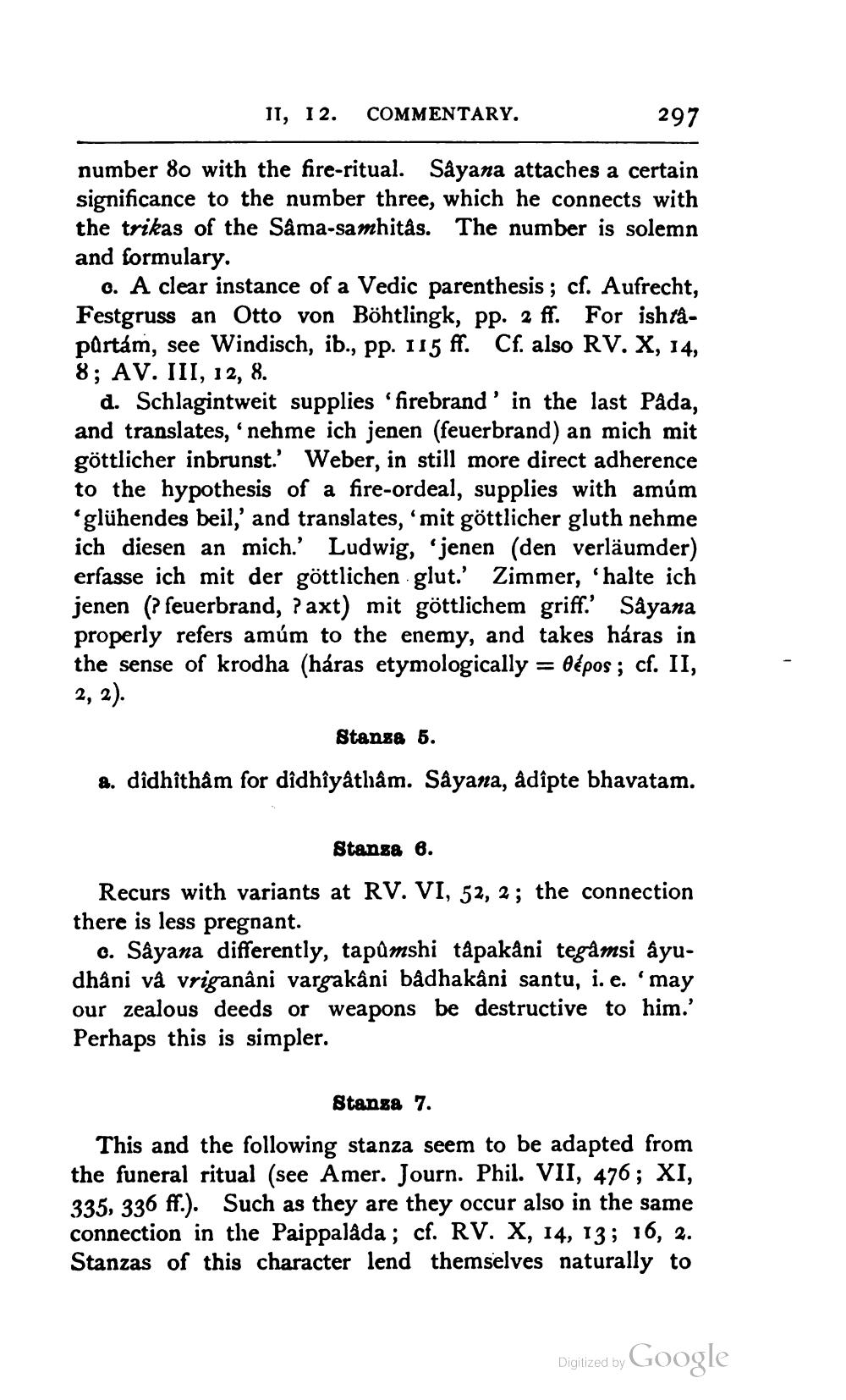________________
II, 12. COMMENTARY.
297
number 80 with the fire-ritual. Sâyana attaches a certain significance to the number three, which he connects with the trikas of the Sâma-samhitâs. The number is solemn and formulary.
c. A clear instance of a Vedic parenthesis; cf. Aufrecht, Festgruss an Otto von Böhtlingk, pp. 2 ff. For ishtâpurtám, see Windisch, ib., pp. 115 ff. Cf. also RV. X, 14, 8; AV. III, 12, 8.
d. Schlagintweit supplies 'firebrand' in the last Pâda, and translates, 'nehme ich jenen (feuerbrand) an mich mit göttlicher inbrunst.' Weber, in still more direct adherence to the hypothesis of a fire-ordeal, supplies with amúm 'glühendes beil,' and translates, 'mit göttlicher gluth nehme ich diesen an mich.' Ludwig, 'jenen (den verläumder) erfasse ich mit der göttlichen glut.' Zimmer, 'halte ich jenen (? feuerbrand, ?axt) mit göttlichem griff.' Sâyana properly refers amúm to the enemy, and takes háras in the sense of krodha (háras etymologically θέρος; cf. II,
2, 2).
=
Stanza 5.
a. dîdhîthâm for dîdhiyâthâm. Sâyana, âdîpte bhavatam.
Stanza 6.
Recurs with variants at RV. VI, 52, 2; the connection there is less pregnant.
o. Sâyana differently, tapûmshi tâpakâni tegâmsi âyudhâni vâ vriganâni vargakâni bâdhakâni santu, i. e. 'may our zealous deeds or weapons be destructive to him.' Perhaps this is simpler.
Stanza 7.
This and the following stanza seem to be adapted from the funeral ritual (see Amer. Journ. Phil. VII, 476; XI, 335, 336 ff.). Such as they are they occur also in the same connection in the Paippalâda; cf. RV. X, 14, 13; 16, 2. Stanzas of this character lend themselves naturally to
Digitized by
Google




